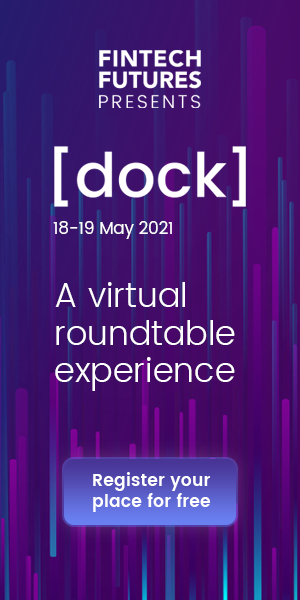What I learned from a chatbot about the future of digital banking
 Vipul Kaushal, SVP, group head of digital transformation at U.S. Bank, joins FinTech Futures’ upcoming virtual roundtable gathering, Dock Digital, on 18-19 May, to discuss the burning issues in banking, finance and tech. Here, he shares his thoughts on what – and how – digital banking should focus really on: people.
Vipul Kaushal, SVP, group head of digital transformation at U.S. Bank, joins FinTech Futures’ upcoming virtual roundtable gathering, Dock Digital, on 18-19 May, to discuss the burning issues in banking, finance and tech. Here, he shares his thoughts on what – and how – digital banking should focus really on: people.
We invite the digital transformation movers and shakers at banks and financial institutions to join him and other senior decision-makers at Dock Digital (it’s free to attend!). Find out more and register here.
This past weekend when I set out to find a new awning for my deck online, I was presented with more configurations, colours, and constructs than I ever could have imagined. Navigating to the customer service portal I was faced with more options: phone, email, or chatbot?
I chose the chatbot. But why?
Why choose artificial intelligence (AI) over anything else? Conversely, how does AI, robotics, machine learning (ML) or other tech effect change in people’s behaviour? Although I’m still thinking about what it means to even ask those questions, I’m certain of these emergent truths:
Technology can be empathetic
Customers want what they want, whether it be a human on the phone, a salesperson on the floor, an email, or a chatbot. At the core is choice itself, and an inherent trust in the choice they make. I chose the chatbot because I didn’t have the attention for a phone call. The options offered by the awning company met my needs, on my time, and experience has framed a mindset for me that they are trustworthy. This “digital accommodation” is incredibly empathetic and inclusive. Amazingly, the company knows nothing about me, but the digital contact choices offered seem to indicate they know me quite well.
I should mention I was making this choice on my phone, at my son’s baseball game, after initially searching from my home computer. It struck me how the chatbot changed the outcome of my day by giving me precisely the information I asked for (in a matter of seconds) so I could watch baseball. Imagine every other customer online that day, and how their lives may have changed because technology delivered choice. How does it work though?
Digital commerce produces a lot of data. This data can be used by businesses to engineer personalised experiences driven by AI; for example, product suggestions based on shopping and transaction patterns, industry trends, and the habits of consumers around the world. Where data equals understanding, and understanding equals empathy, one can see how AI can provide a truly amazing customer experience.
Enter the manually intensive nature of “legacy” middle or back offices, where each sub-process may require ten steps between a handful of applications to produce, e.g. a standard month-end report. By training bots to execute each step previously handled by two or three people, at a rate that far exceeds the physical capability of a person (think 5,000 clicks per minute), those same people are now able to apply their time best to what makes them human – emotional energy and empathy – to the business activities that benefit most. Like customer service.
Technology can improve the conditions for success
The fact that my mind drifted to the technological benefits within “the middle and back office” operations made me wonder what I’ve been taking for granted, and I realised there are companies where there is no distinction between back and front offices. They are start-ups and small businesses built on a few very hard-working dreamers. Since I often default to “big” operations with my innovation teams, I wondered if digital collaboration has a corporate bias?
Frankly, no. In fact, tech almost always favors small businesses. As the pandemic grew worse, there was an assumption that most small businesses would slow down or fail completely, but the truth was quite the opposite. Small business questioned legacy definitions of service, and focused on “how will we do it?” instead of “can it be done?” Now they’re asking questions like “why would I need a brick-and-mortar storefront?” and “does my restaurant kitchen actually need a dining space?”.
Reminded now of my concerns about small business owners adapting and exceling against what, in the past, would have been crippling obstacles, I learned a good lesson: small business owners are truly the most tech and digital savvy innovators and I’m certain that a new industry focus on ML, API and AI applications for small businesses will enable them to serve their unique customers and communities in better, faster ways.
The chatbot is a people-person
Departing from my own reflection off my phone to catch the next batter up, it occurred to me the chatbot had taught me a lot about my professional future and the big work to be done across the fintech industry: we shouldn’t be thinking about reflexive solutions or “tech for tech’s sake”; rather, if we’re to best serve clients through digital experiences, we ought to abstract tech away from the schema and focus solely on people – not just the accountants and treasurers, but the bakers, barbers and butchers. Anyone, really, who could use another hour to watch their kids play a game of baseball.
Thankfully, U.S. Bank is encouraging me and my team to do just that.












































